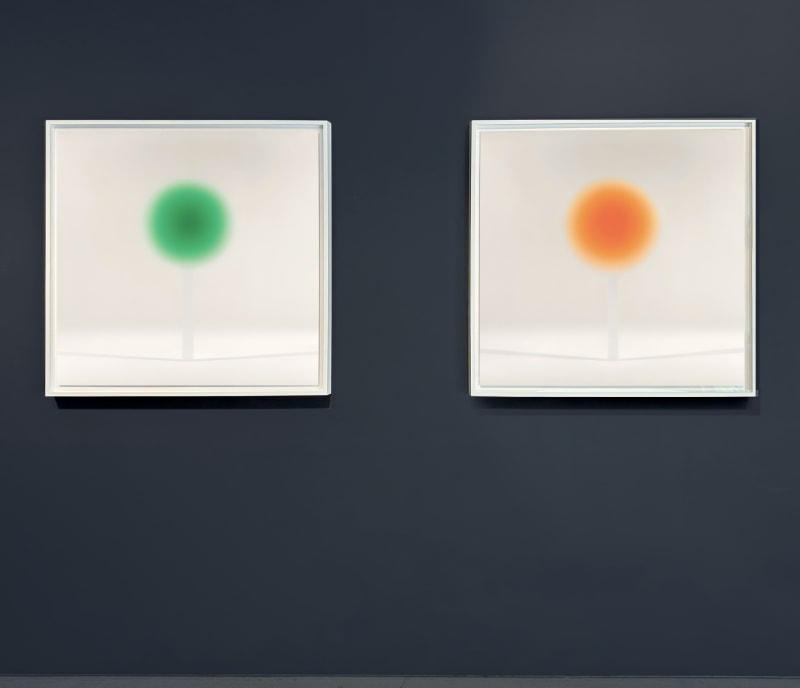Helen Pashgian is one of the leading figures in the Light and Space movement. Like her colleagues Robert Irwin and James Turrell, Pashgian changed the course of art by arguing that a work is not defined merely by what is in the frame but is rather made in the perceptual system of the viewer. That is why for Pashgian, an artist needs to take into account the entire space of the viewing experience. In Pashgian’s lenses, this means that the walls of the gallery need to be coved, special lighting needs to be installed, and every color in the room controlled. Control and precision create the remarkable viewing experience of Pashgian’s lens work.
The Lapis Press is pleased to present a new edition by Helen Pashgian, Untitled (the Green Lens), 2024. This edition of 7 pigment prints on paper is a continuation of her lifelong examination of the transitory perception of light. In Untitled (the Green Lens), pink flashes appear around the green edges and into the borders of the print. Pashgian’s first Lapis Press edition released earlier this year, Untitled (the Orange Lens), captured on paper the ephemeral quality of her complex installations. Like Untitled (the Orange Lens), this print on paper captures the “presences in space” with its evolving vibration of color.
The unique part of the work is the after image. No one knows why this is happening. The sculpture is made of equal layers of orange and yellow. The extraordinary thing is that on paper the viewer sees strong aqua and violet after images. In the print, one is getting more than the eye can see. It is, itself, a completely new work of art.
- Helen Pashgian
Untitled (the Orange Lens), 2024, now sold out, recreates on paper the mystical effect that Pashgian’s lenses have in a controlled environment. In Untitled (the Orange Lens), the orange disc seems to grow and diminish in the viewer’s perception, while at times, the turquoise halo around the disc is the most prominent visual phenomenon. Untitled (the Orange Lens) transforms the print into an environment and recreates on an intimate scale the ephemeral visual effects of Pashgian’s polished lenses.
